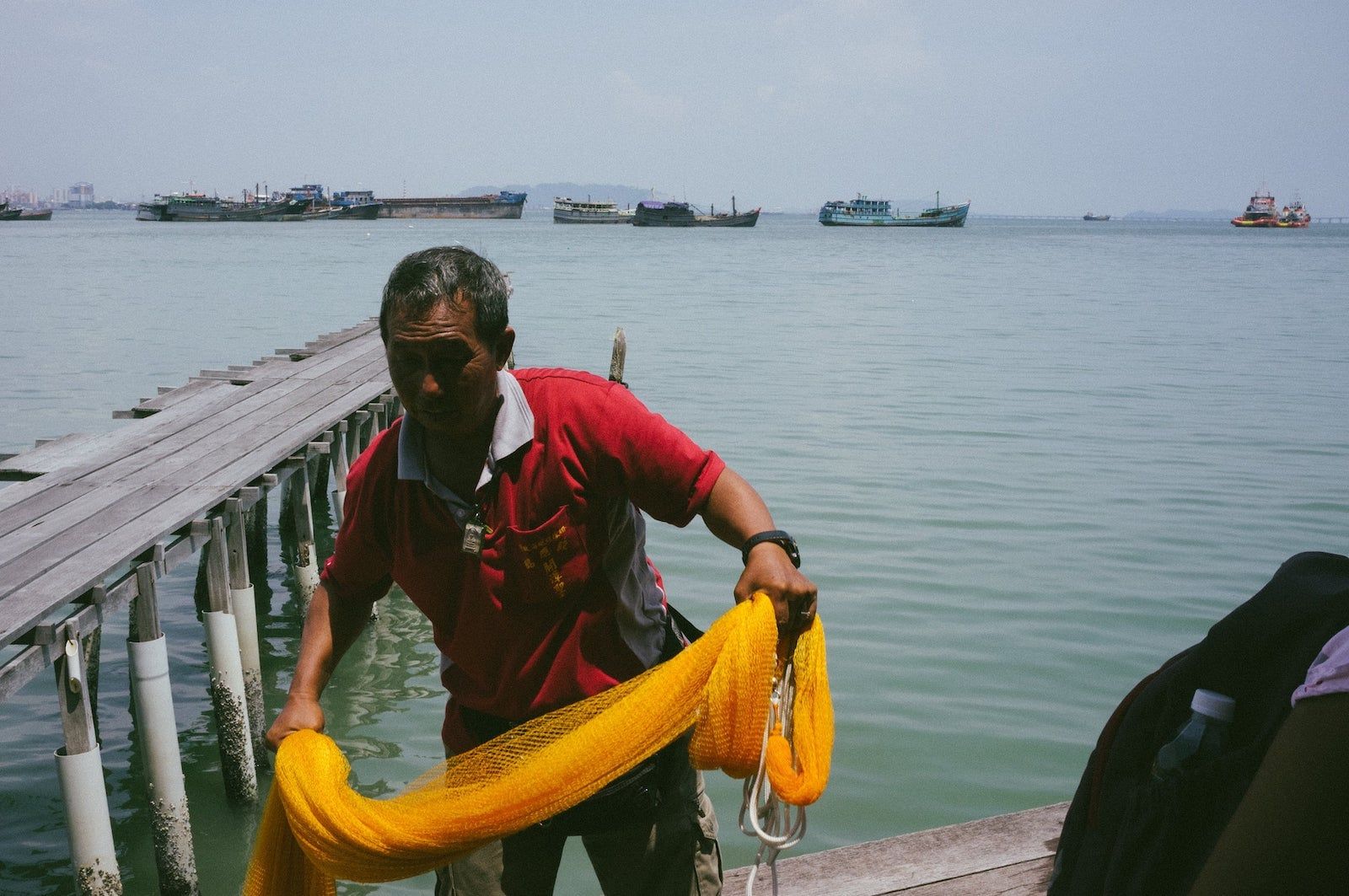#Projects

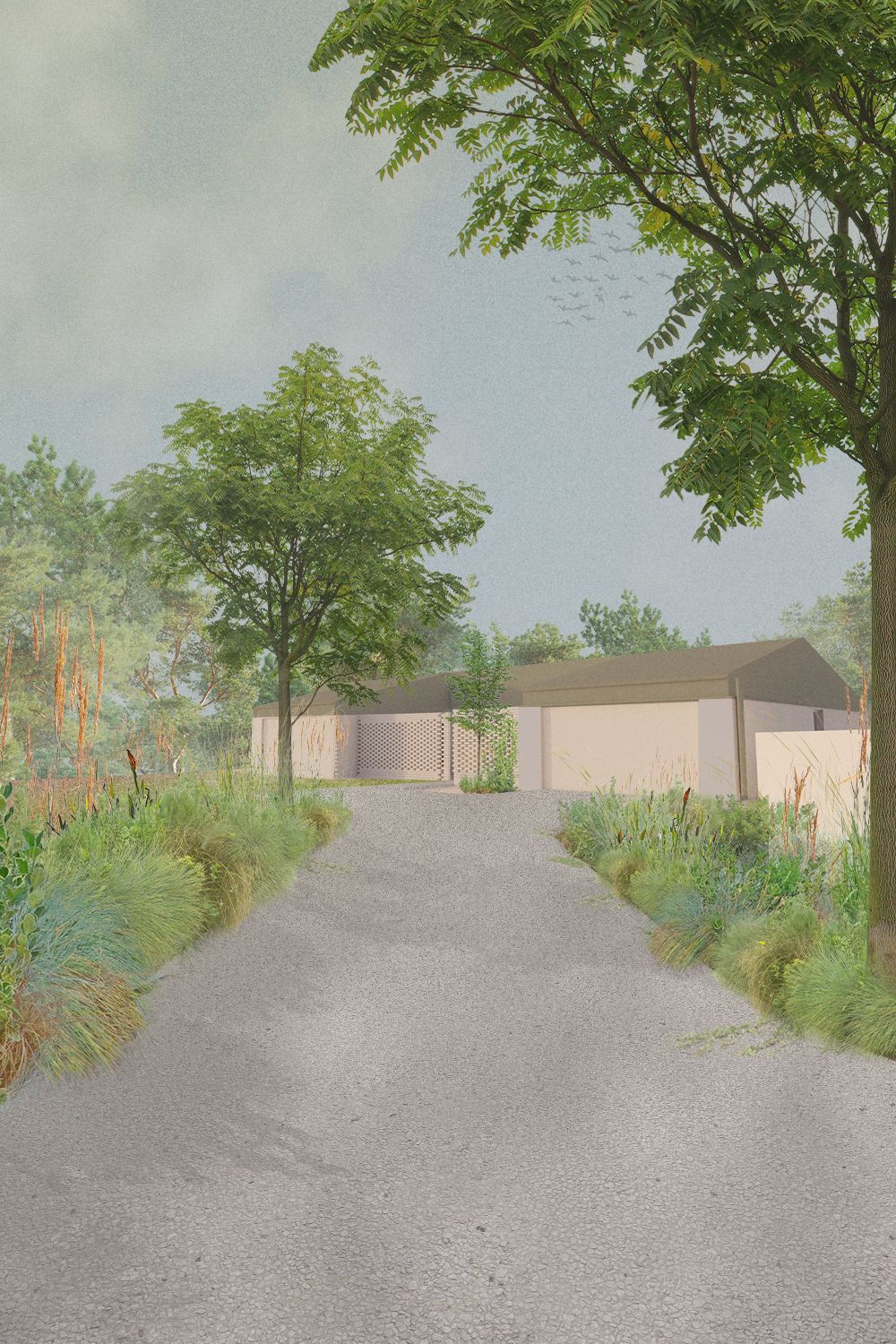



Ageing is an inevitable part of the human experience, yet in Britain, it is often shrouded in shame. From “anti-ageing” products to “OK, boomer” memes, the message is clear: being old is something to avoid. These ageist attitudes permeate our society. Our fear and rejection of ageing lead us to marginalise older people instead of creating an inclusive environment for them, resulting in the need for facilities such as care homes.
The project aims to challenge our current model of aged care by embedding care into the existing suburban fabric, making ageing a more equitable experience. It rethinks the typical care home wall, considering how it can enable rather than disable older individuals. By incorporating supportive elements to aid mobility and navigation, and fostering community support, older individuals can continue to live relatively independent lives despite potential physical and mental changes.
We are increasingly living longer lives. Aged care is an issue we should all care about.
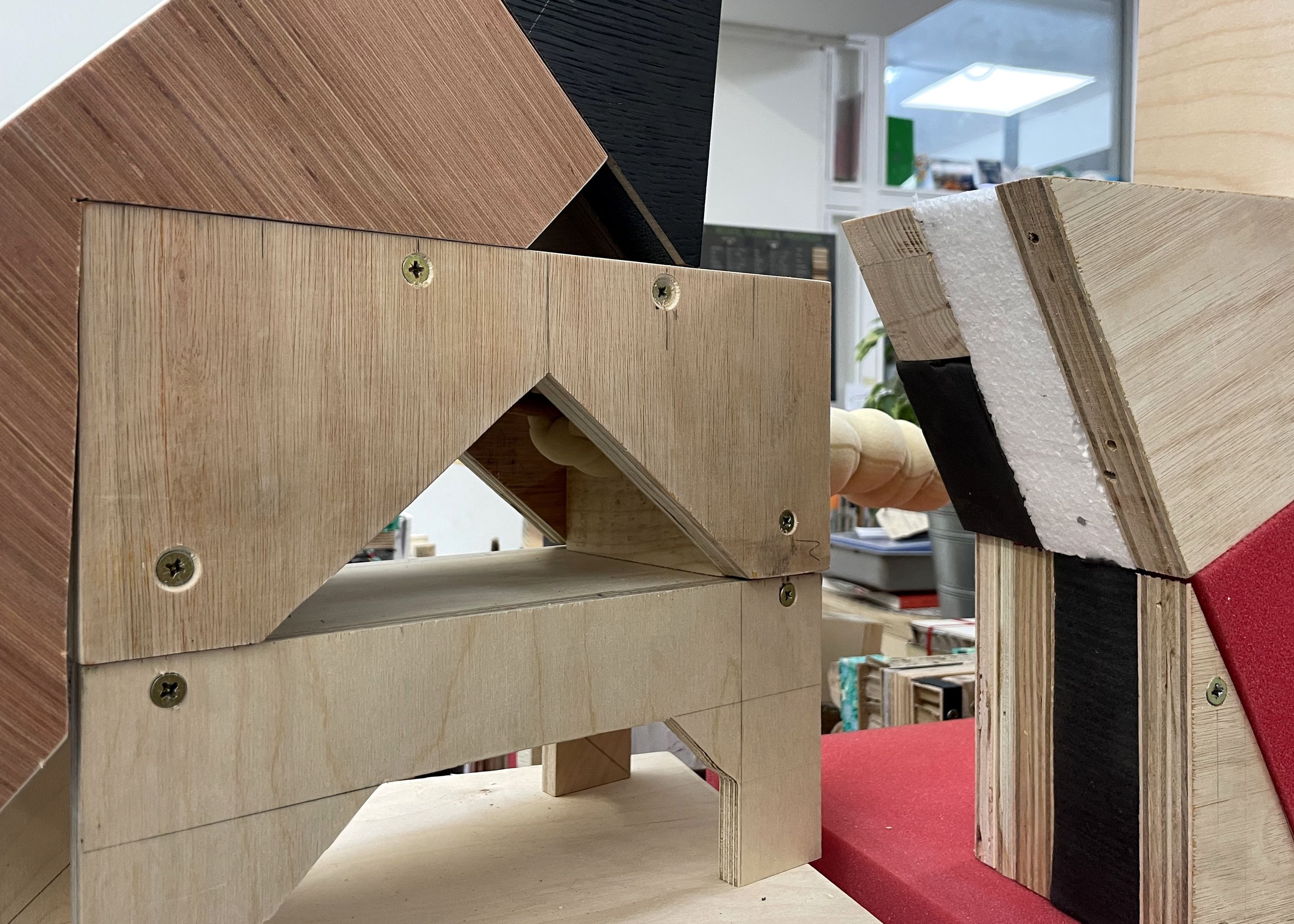
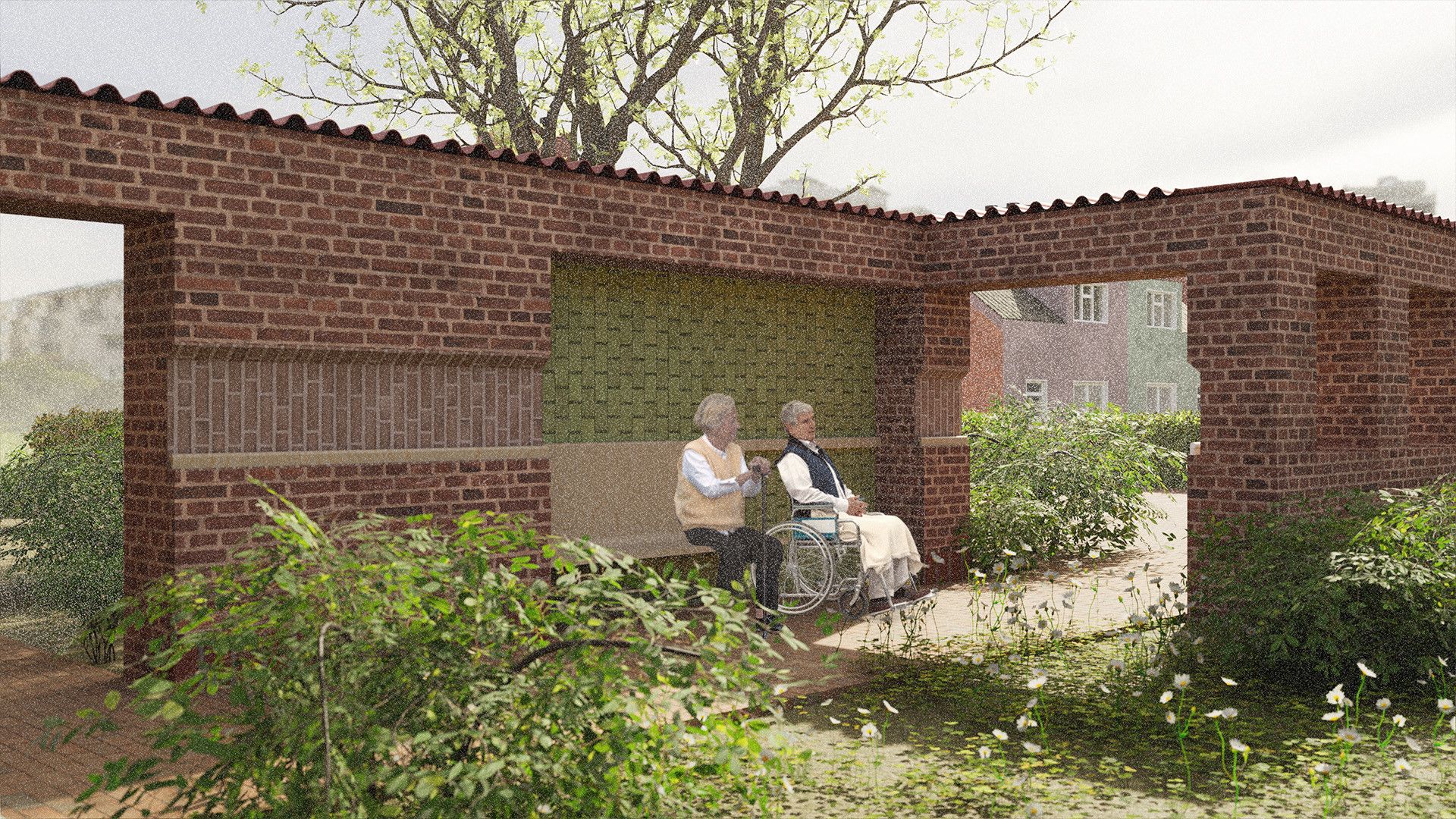
The AA Material Arcade and Swiss architect Sébastien Tripod are responding to a challenge set by the Swiss Embassy and the Design Museum in collaboration with the AA Summer School: design with reclaimed materials a construction game inspiring creativity and community.
From a pallet to a new landscape, and vice versa. The AA Material Arcade and Swiss architect Sébastien Tripod invite you to play with shapes and textures to collectively create a sculpture as part of the London Design Festival on 22 September at the Design Museum. Addressed to adults and children alike, REPLAY questions reuse and its aesthetics, whilst demonstrating how playfulness invites creativity.
The rules are simple: take a piece and place it touching another. If it falls, a new foundation is formed. Players must always work with the existing, leading to a shifting structure shaped by past and present participants — reflective of the process in the development of the project. Once the structure, building or landscape is completed, it’s time to think of reuse and replay. The construction game turns into a puzzle and the puzzle will become a construction game for future players.
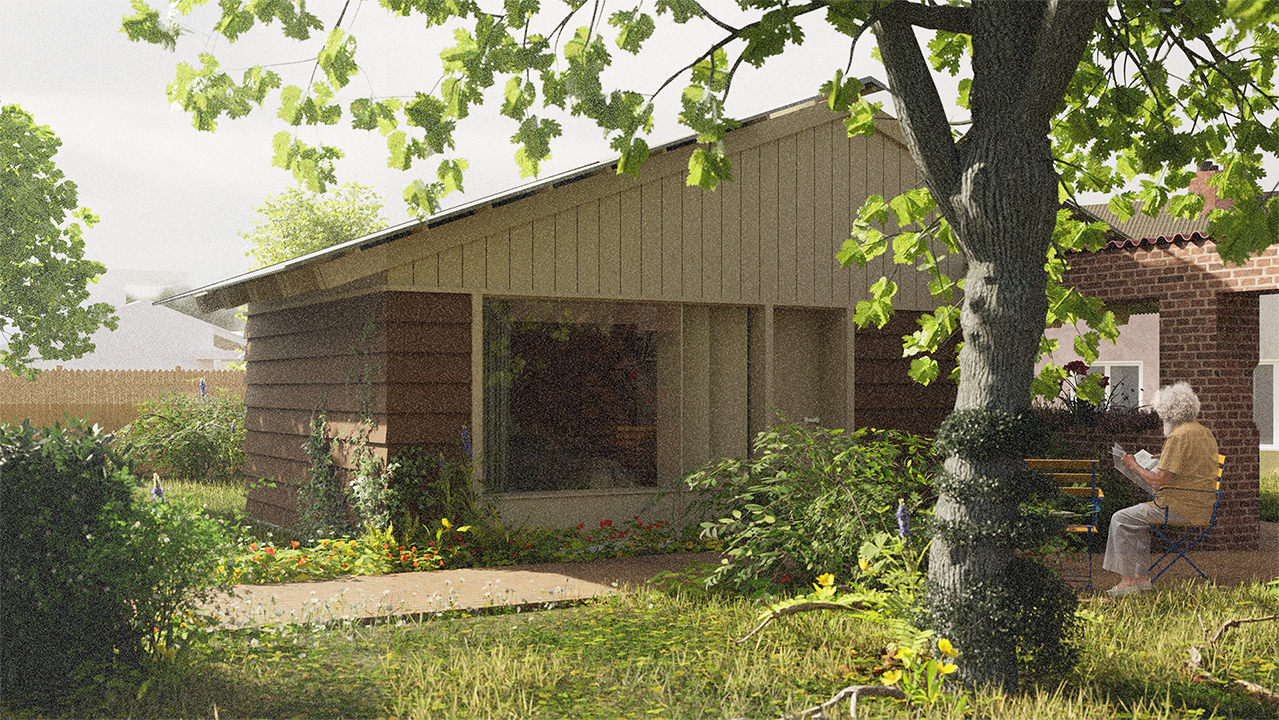

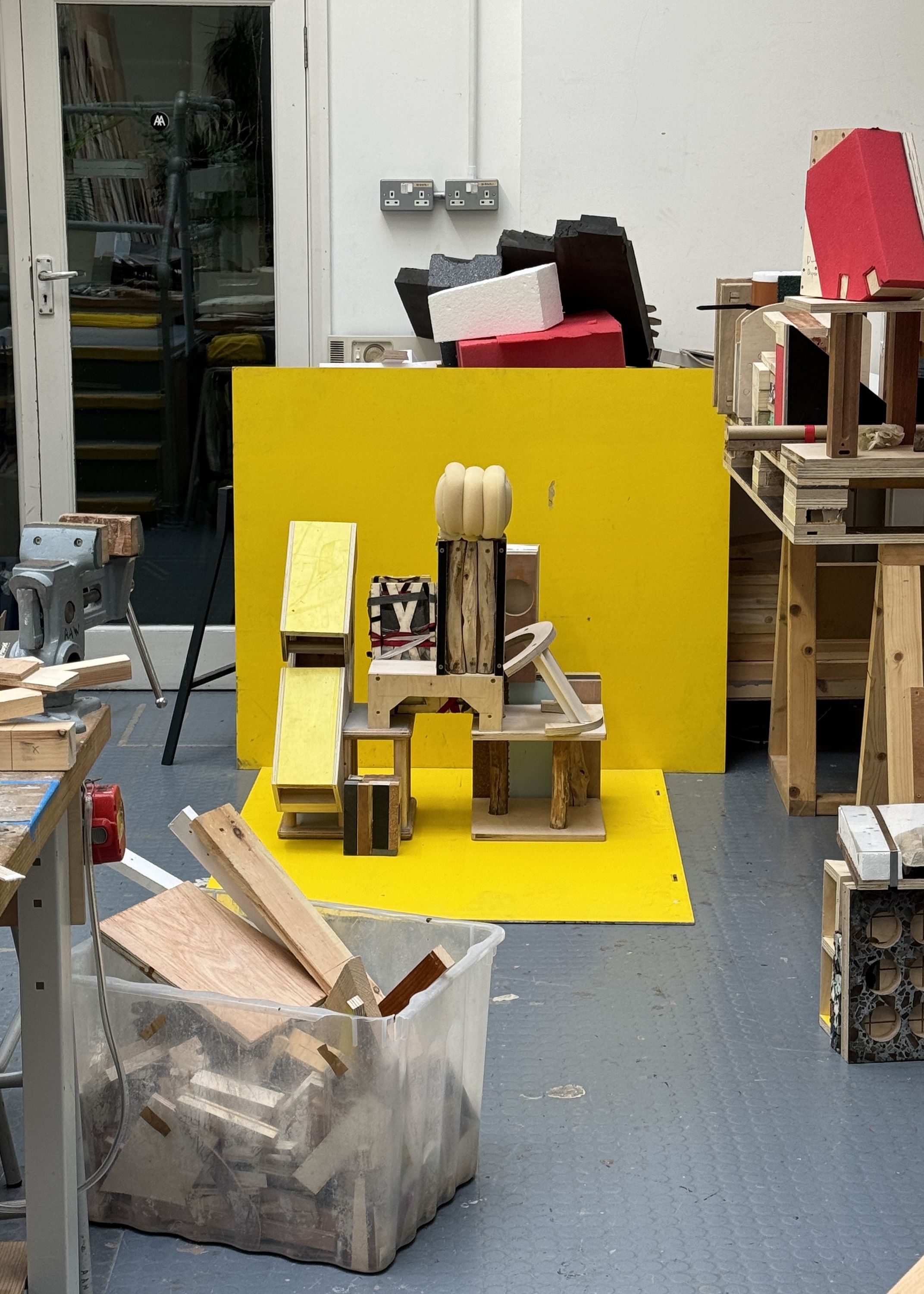
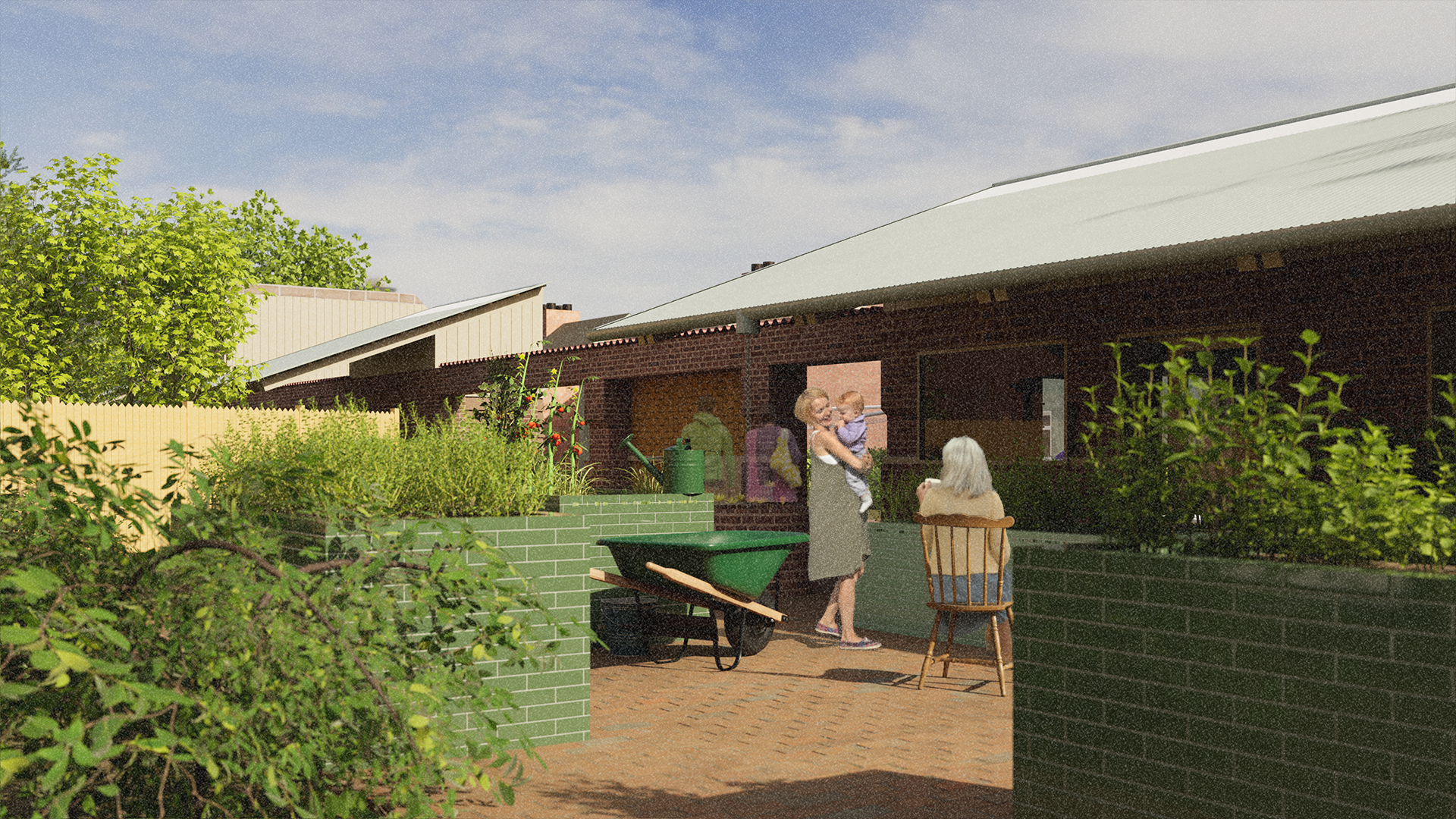
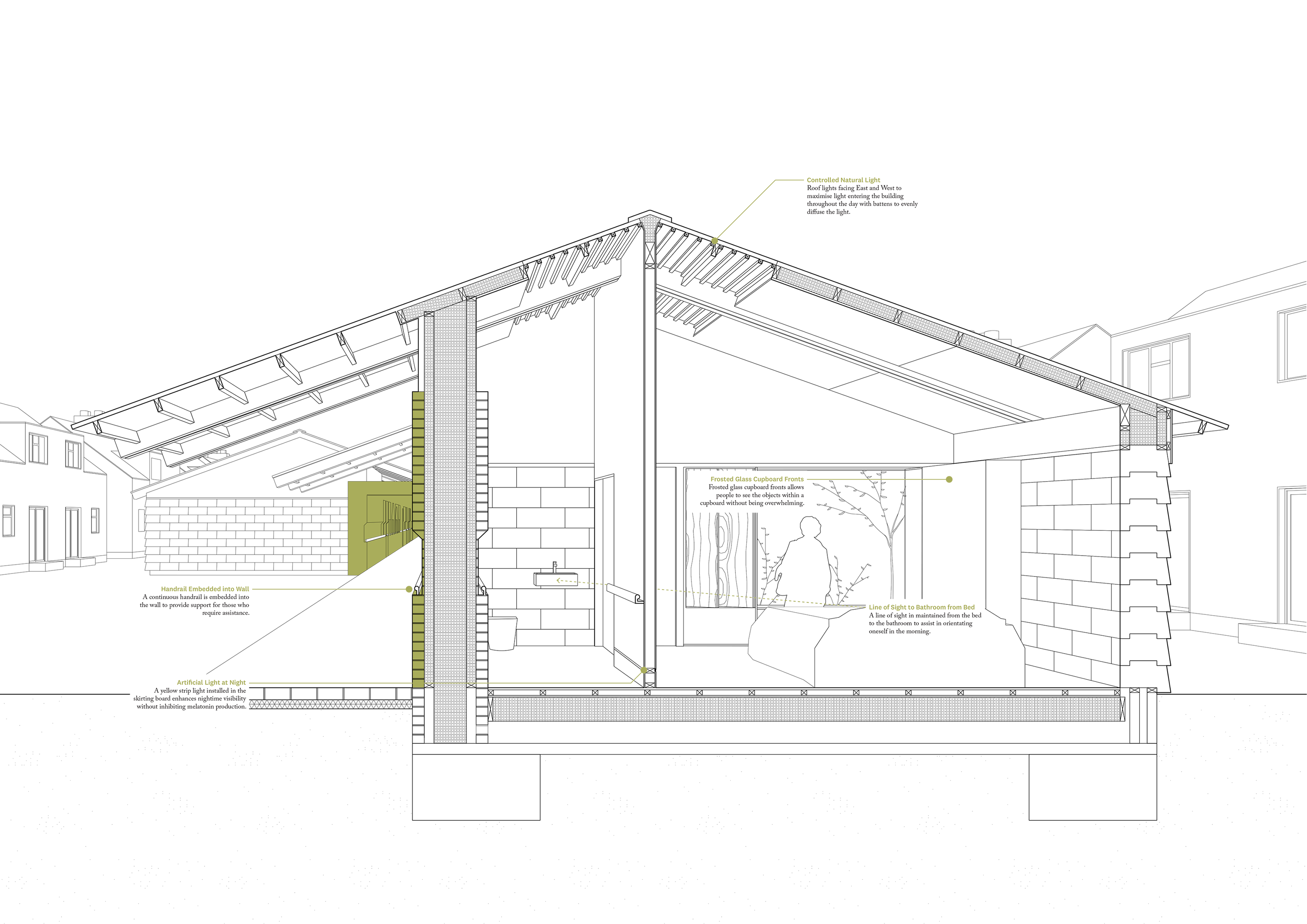
Post-Brexit and post-pandemic, office leases in London have plummeted to a 20-year low in the fourth quarter of 2022. Despite weak market demand, building developments continue, and thus so does demolition.
To counter the use of vacancy as a pretext for demolition, we set up No End State, an agency within the built environment. Our mission is to prevent demolition resulting from building vacancy. Through advocacy and consultancy, we challenge the idea that the buildings we need must be built from scratch — instead, we strive to find new uses for existing structures.

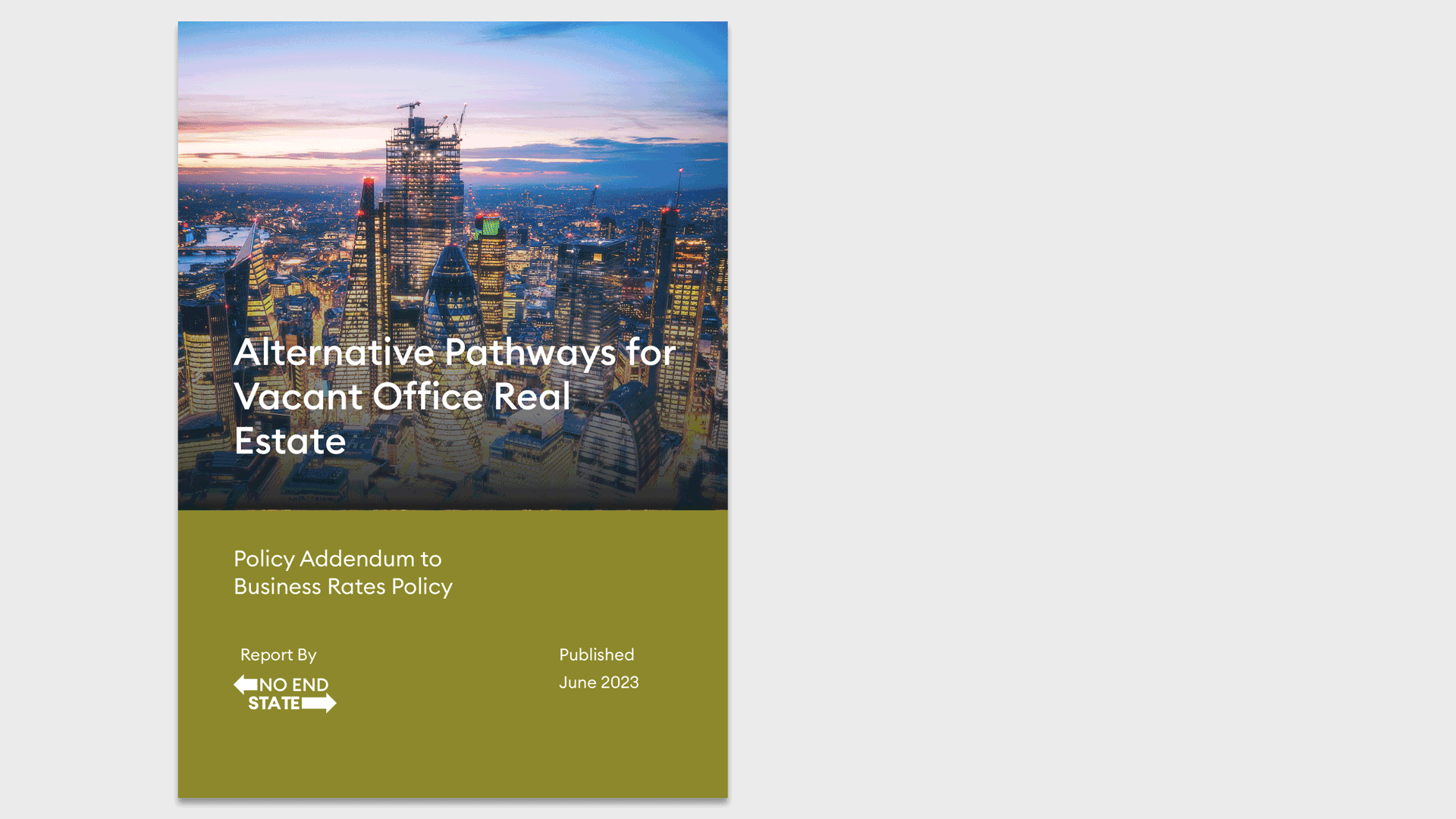
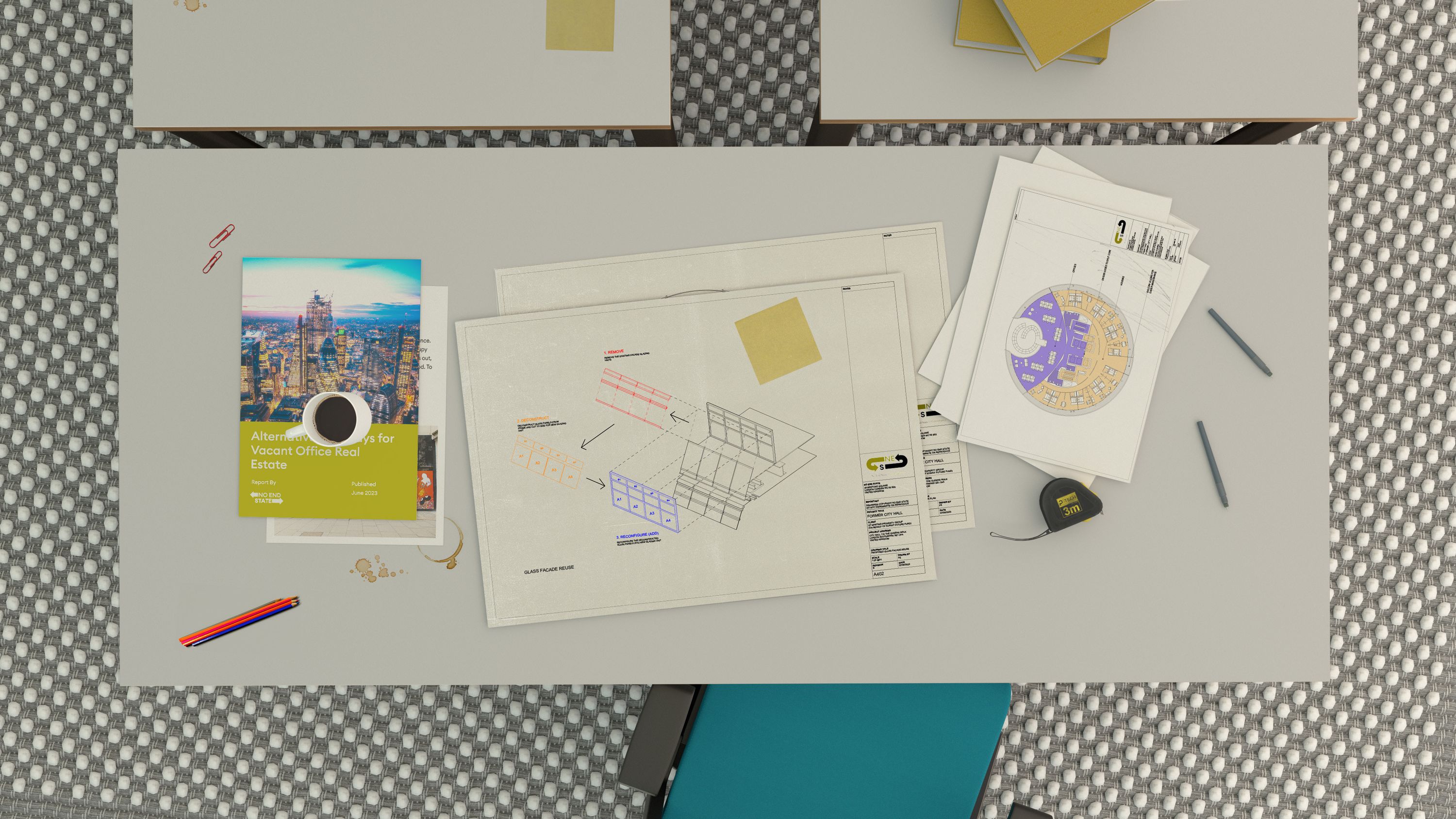
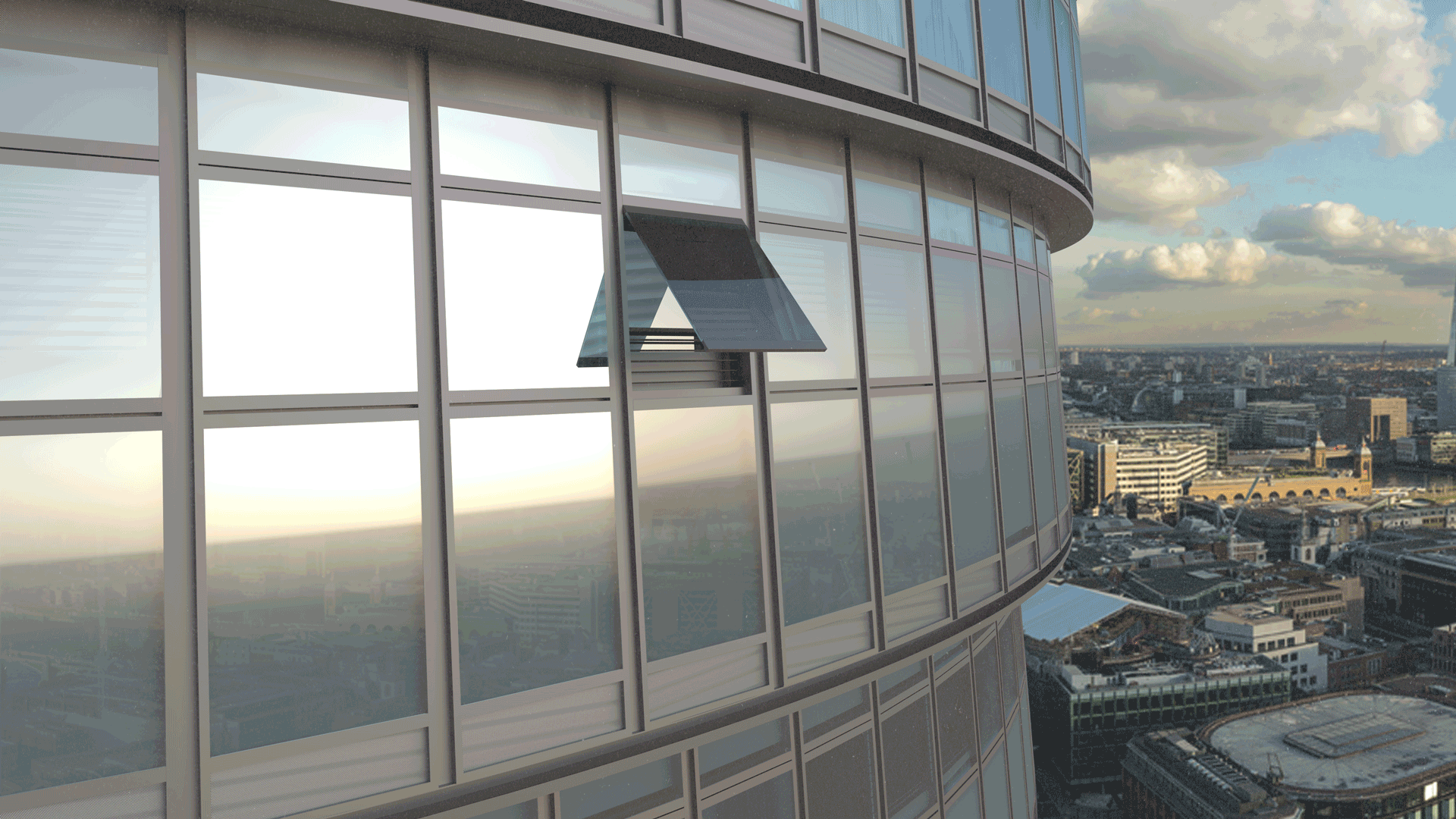
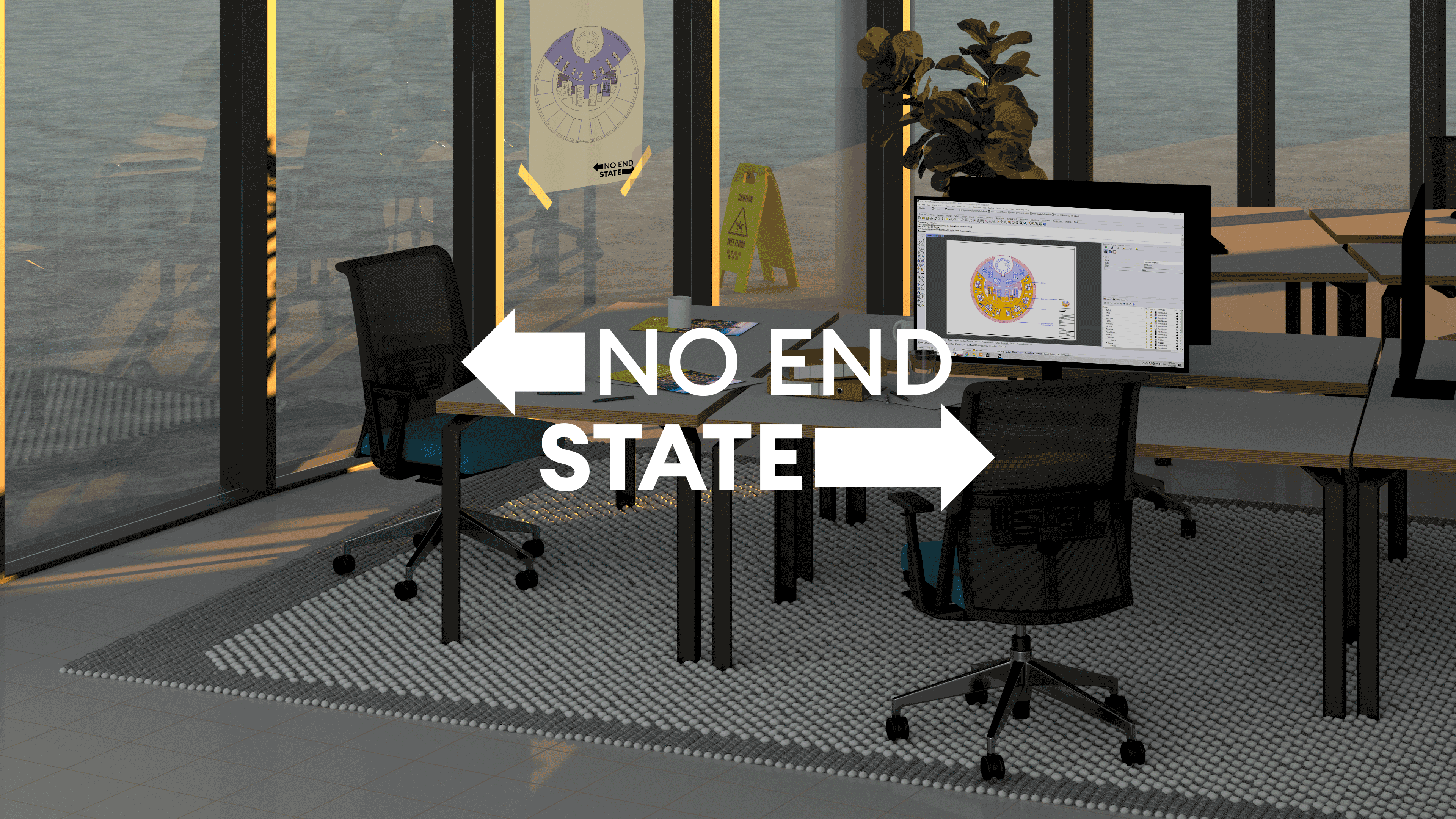

Office buildings have always been a frontier for technological advancements, emerging models of social structure and labour rights, and the endless churning of the financial and real estate market. Flexibility, as opposed to stability, has been its slogan. Obsolescence, as opposed to endurance, has been the defining characteristic of the office typology.
Meanwhile, the pandemic has fundamentally shifted the way we work, where we work and how much we work. Many employees and employers are asking themselves, “Do we really need to be together in an office to do our work?” As others questions the future of work, DIP18 examines the future of workplaces. Can demolition continue to be the default strategy for offices that become redundant, vacant or outdated? Or can we work with what we already have? Can we work with old office buildings to imagine new ways of working?
We ‘hacked’ a live office building that was in-limbo, going through a period of instability or at risk of demolition. Our interventions ranged in scale from policy-making to positioning ourselves as facilitators between public and private stakeholders, and from maintaining existing office buildings to designing a new market and system to reintegrate reclaimed materials from demolished buildings. We engaged with various actors — site contractors, landowners, developers, activist groups, real estate agents, civil servants, reclamation yards, scientists, engineers, as well as architects — to build our knowledge and gather support for our ambitions. We dare to dream of the office that will grow not taller or bigger, but older and wiser with us.
View Diploma 18 on AA Project Review 2023 → View Diploma 18 on ROTOR →
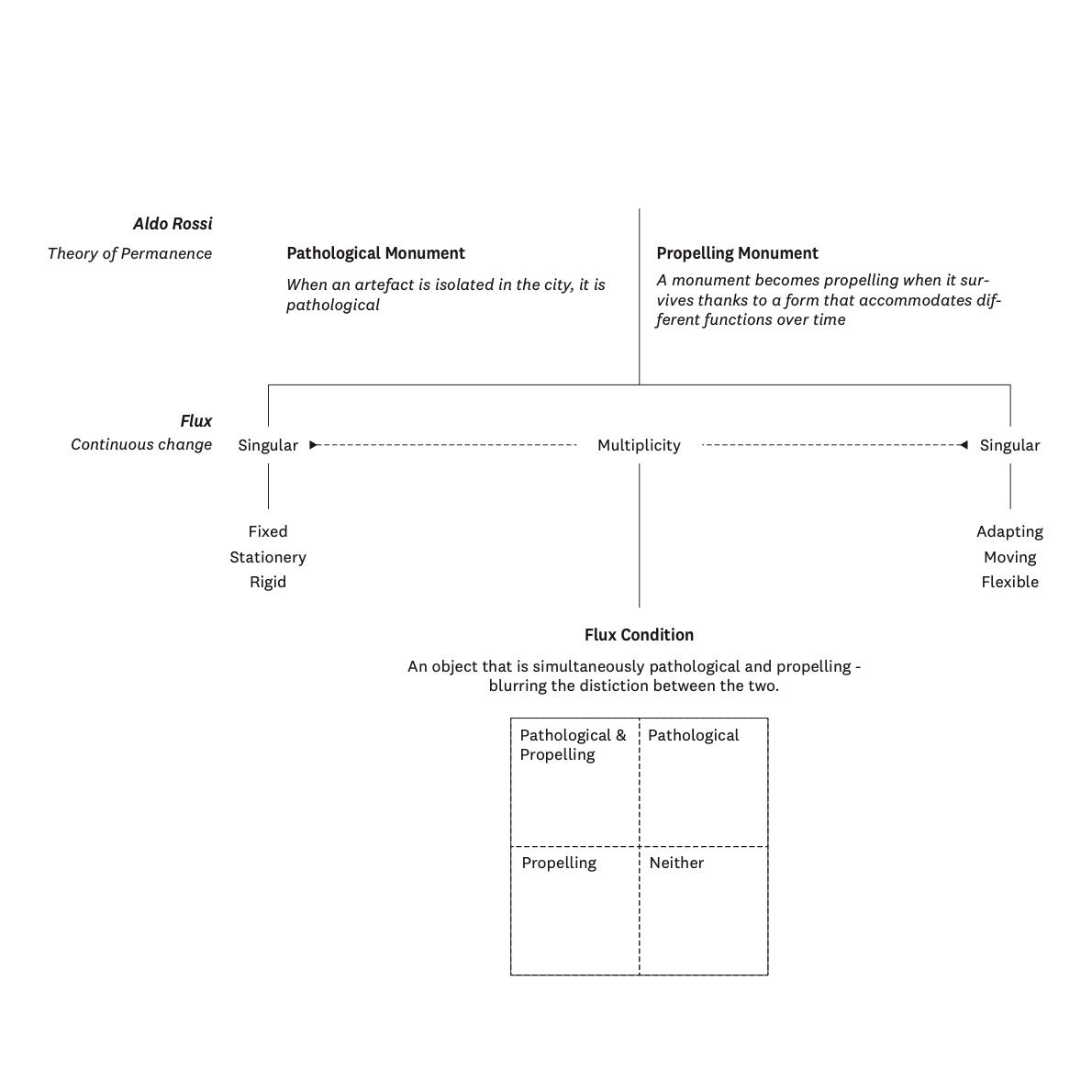

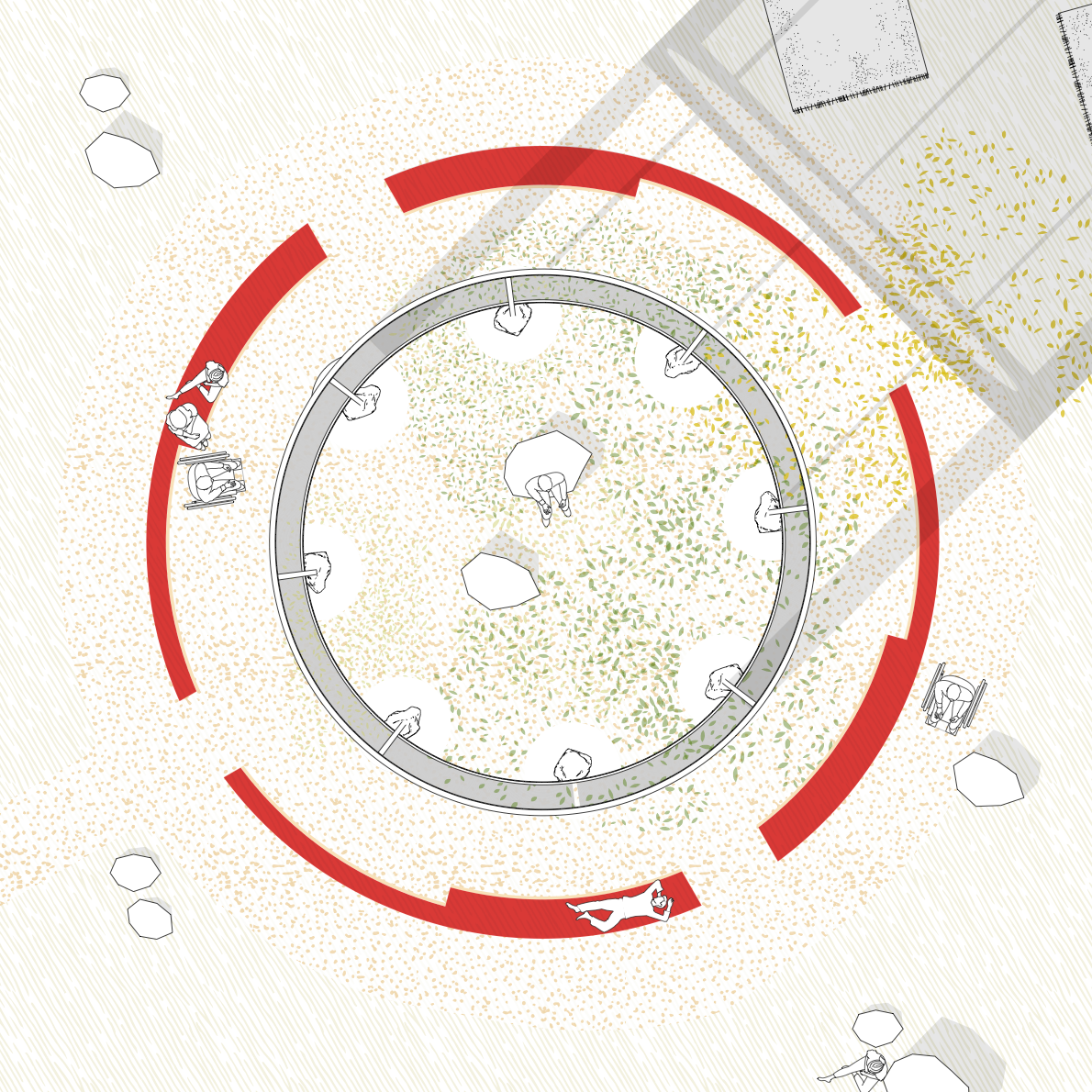
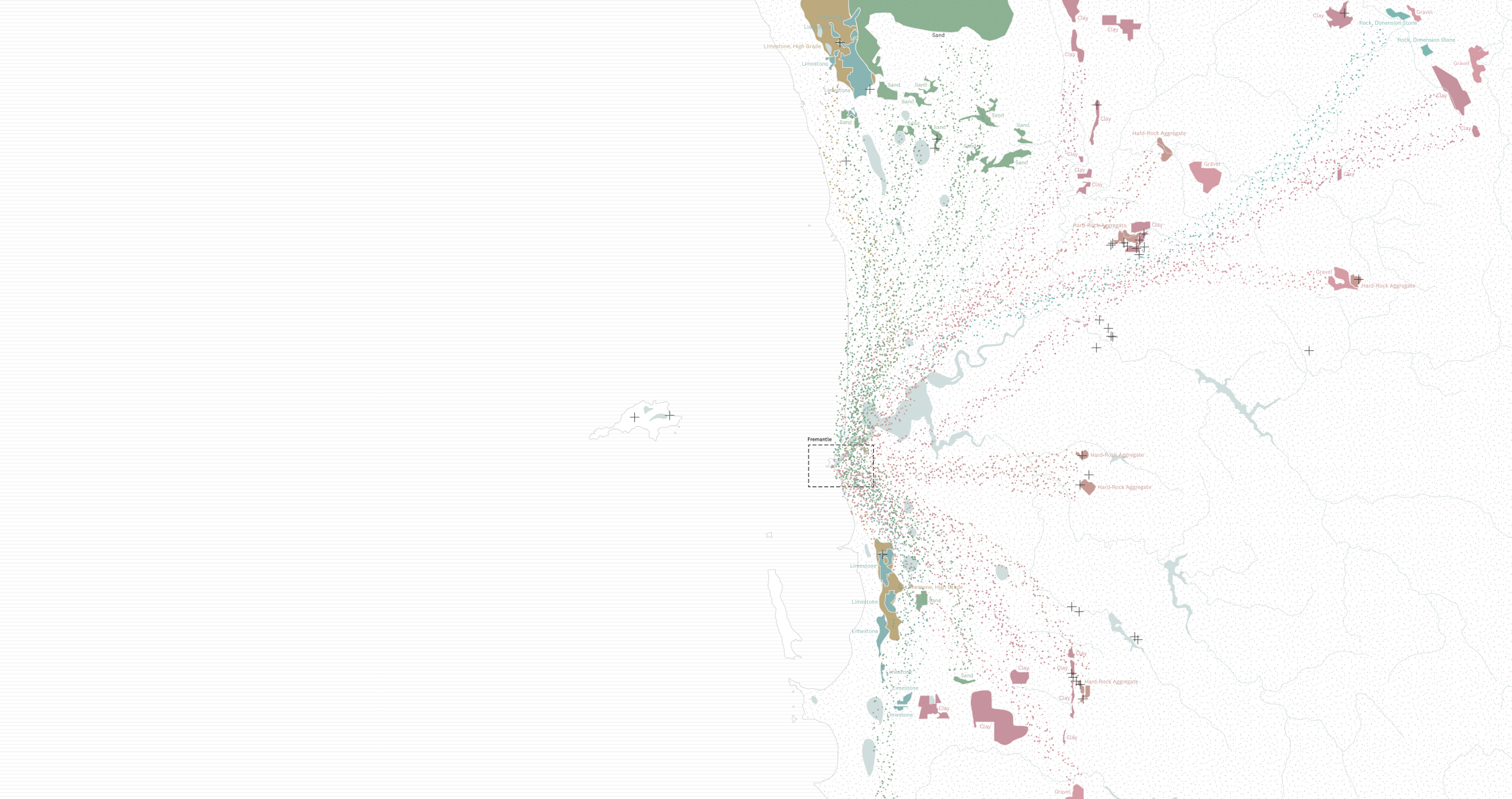
“If everything was, would anything be?” questions the clear distinction and hierarchy between what is and is not heritage within the City of Fremantle. Through the displacement of existing and the introduction of new heritage materials within Fremantle, the proposal seeks to blur the heritage zoning archipelagos within the city.
The project began with exploring heritage systems at a local, state, national and international level. The disconnect of the Princess May Reserve from the rest of the heritage zones was revealed through mapping the various heritage overlays onto the City of Fremantle. Adelaide Street was proposed as a link between Fremantle’s West End and the Princess May Reserve heritage zones to overcome this island condition.
A matrix drawing was constructed to explore the material condition of Adelaide Street to identify the aesthetic differences between heritage and non-heritage zones. This study revealed that the heritage zones look at the singular historical monument, while the non-heritage zones explore the multiplicities of place.
This exploration led me to Aldo Rossi’s “Theory of Permanence”. Rossi proposes that monuments within the city can be categorised as pathological (a monument fixed within the city) or propelling (adapting through use). I questioned this dichotomy that Rossi proposes and argued that these monuments within the city are constantly in a state of flux, existing between the two conditions.
Interested in this flux condition, I explored how the act of care could help bridge and blur the distinction between what is and is not heritage. The proposal sought to dismantle elements of limestone heritage within Fremantle, documenting them and displacing them within the city - whilst simultaneously introducing new ‘heritage’ elements of raw materials extracted from the surrounding quarries in Greater Perth.
This ambition was further integrated into the project brief of creating a plan for the Princess May Reserve. The brief required a flexible art space for the client onsite, DADDA. A series of pavilions are positioned on site, each having a different operation that promotes care. The first pavilion takes the form of a raised circular mesh structure in which deciduous plants grow. Throughout the year, the plants drop leaves that are cleared up to fill the wall structure of the vertical planter garden wall that wraps the service area. This plant waste is used to fertilise the raised planter beds located to the west of the Old Boy’s School. Instead of considering buildings in a finished state, the constant need for maintenance in the proposal encourages and promotes care for the pavilions and site.
The proposal seeks to challenge our thinking of heritage as a fixed or static object. Instead, through the displacement of existing and introduction of new materials within the city and the utilisation of maintenance embedded within the design of the pavilions, it seeks to reveal another layer to the city, which is constantly in flux.

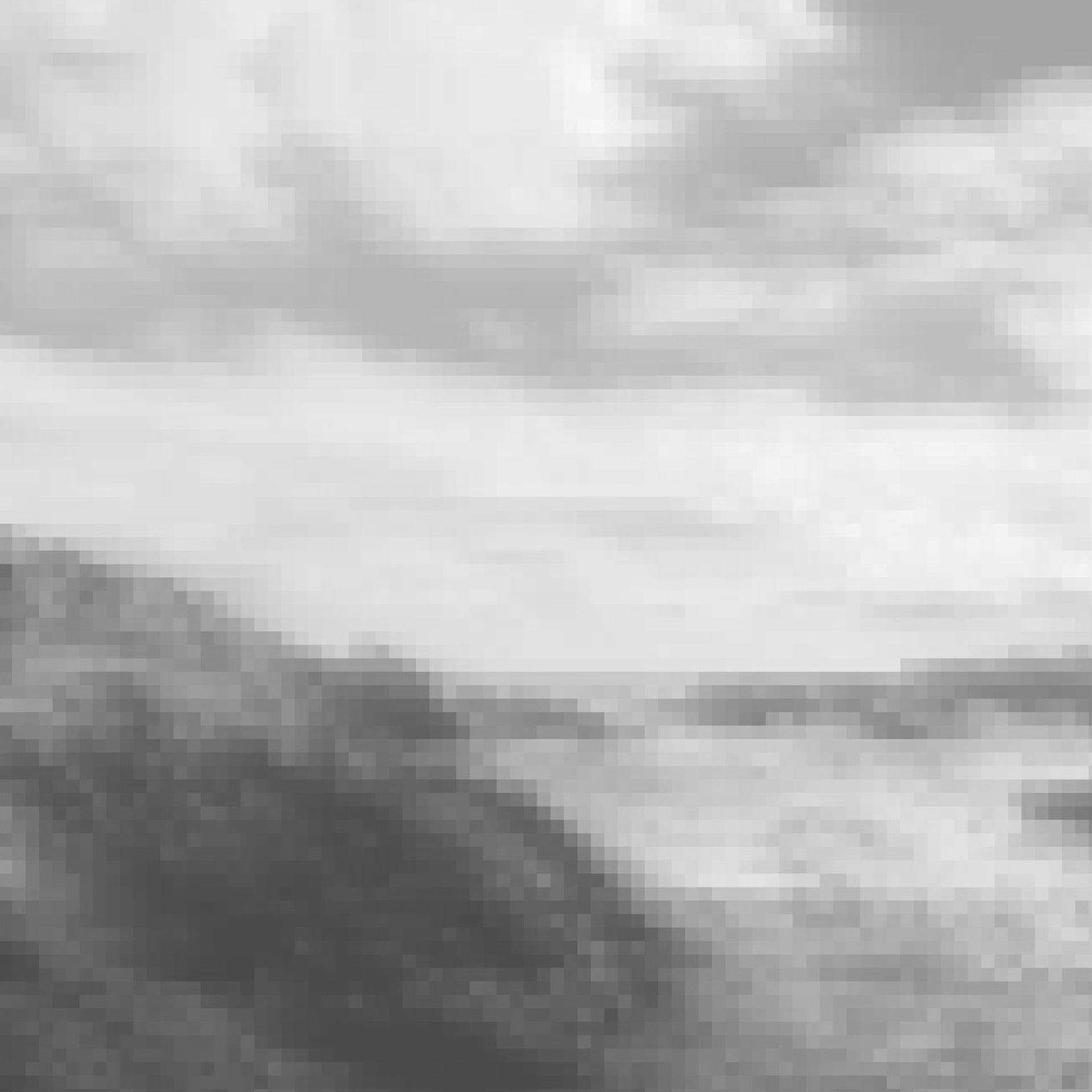
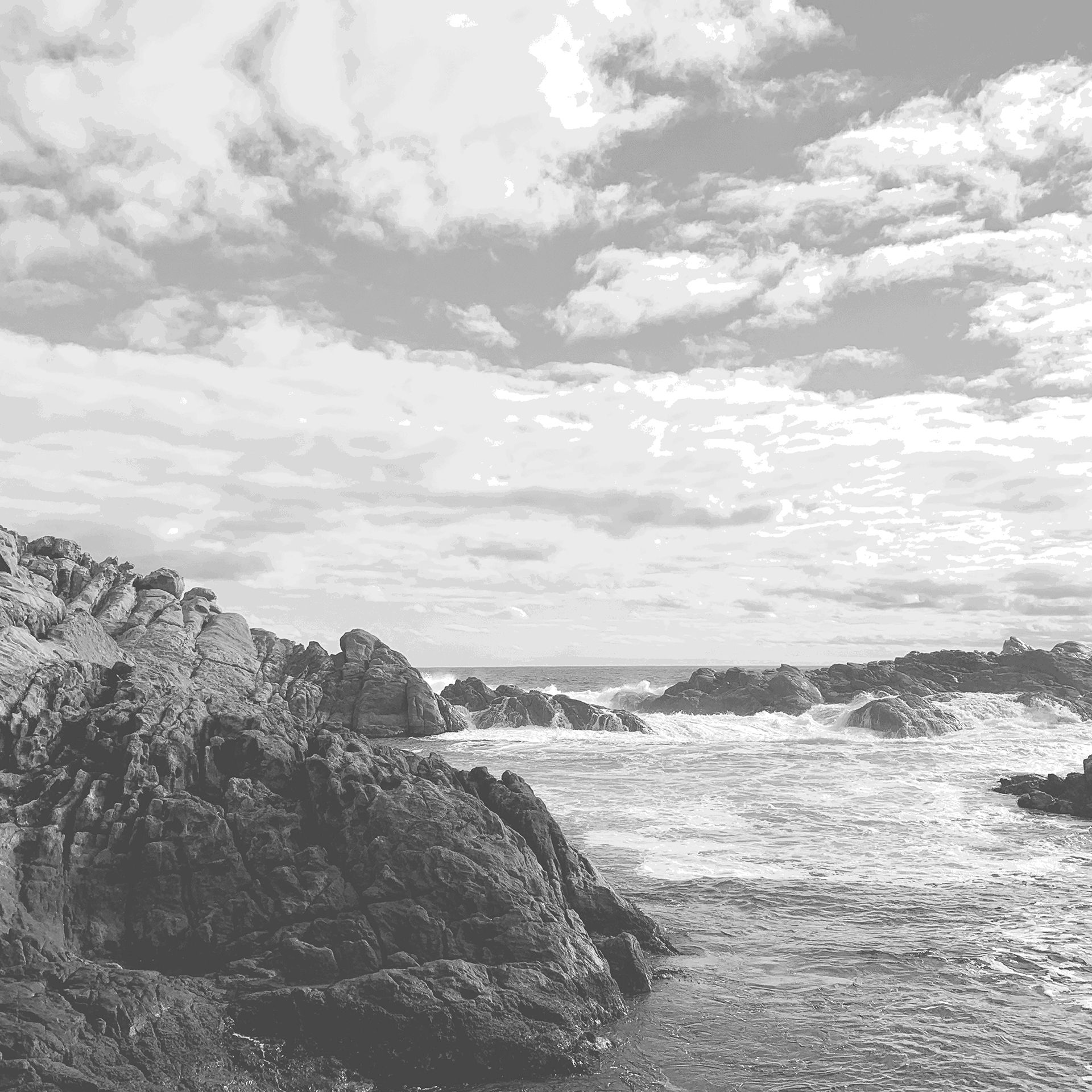
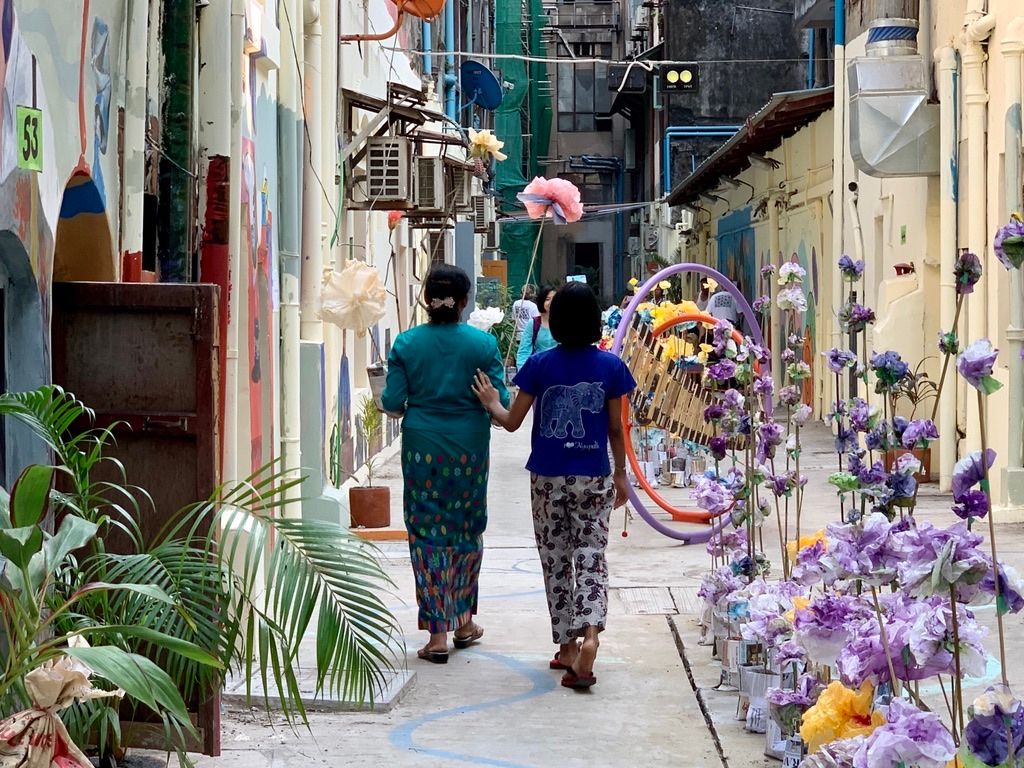
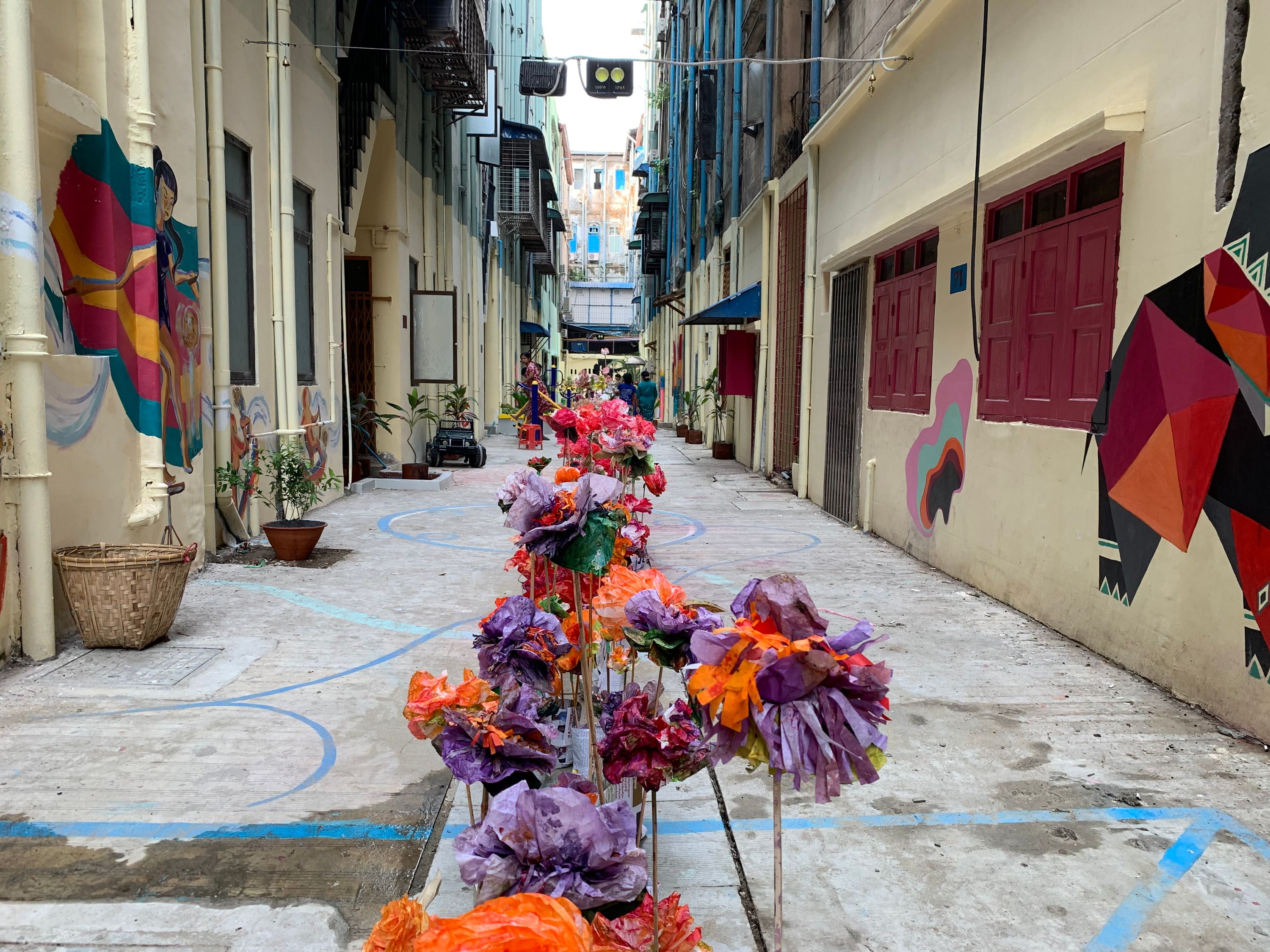
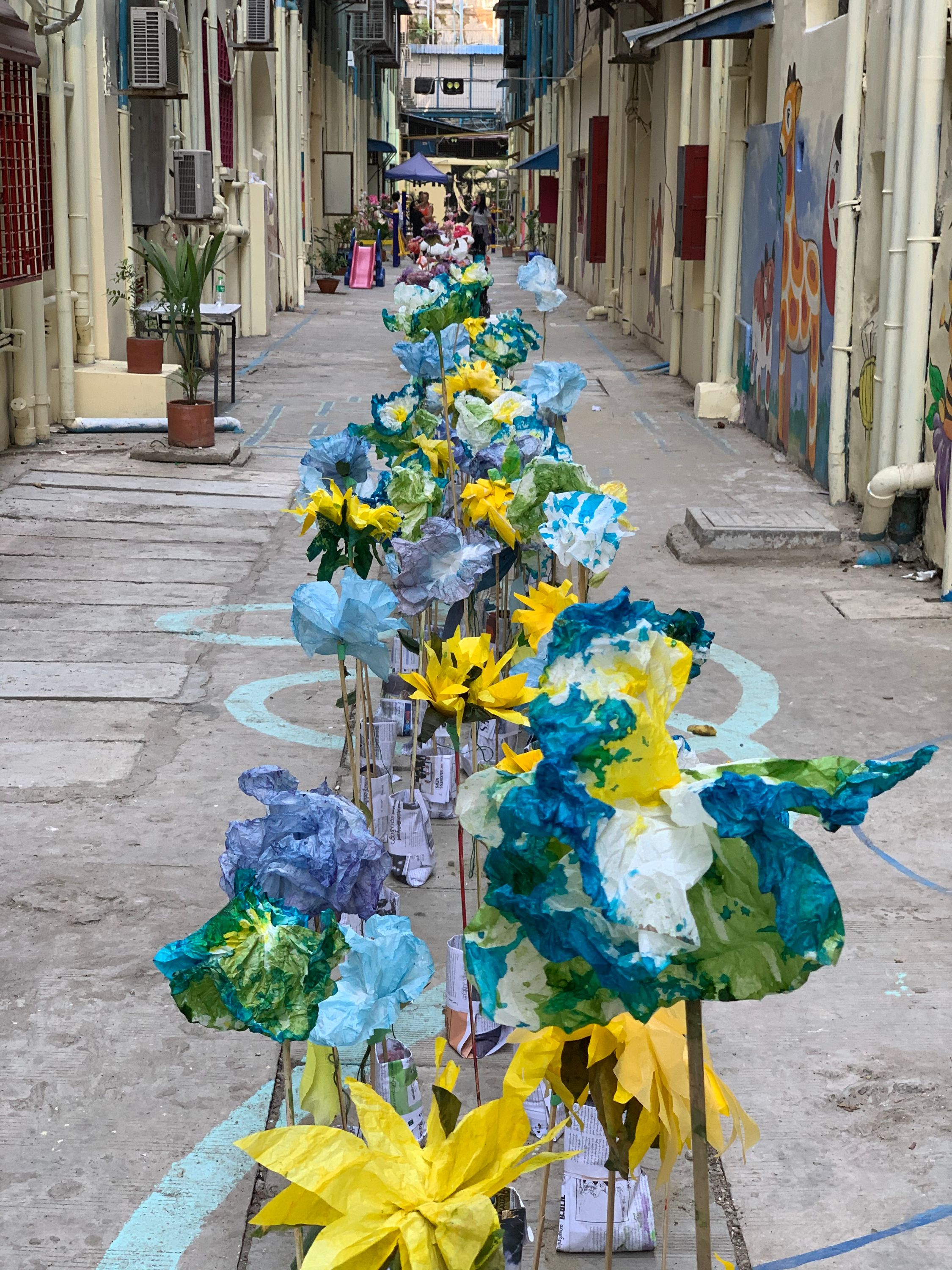
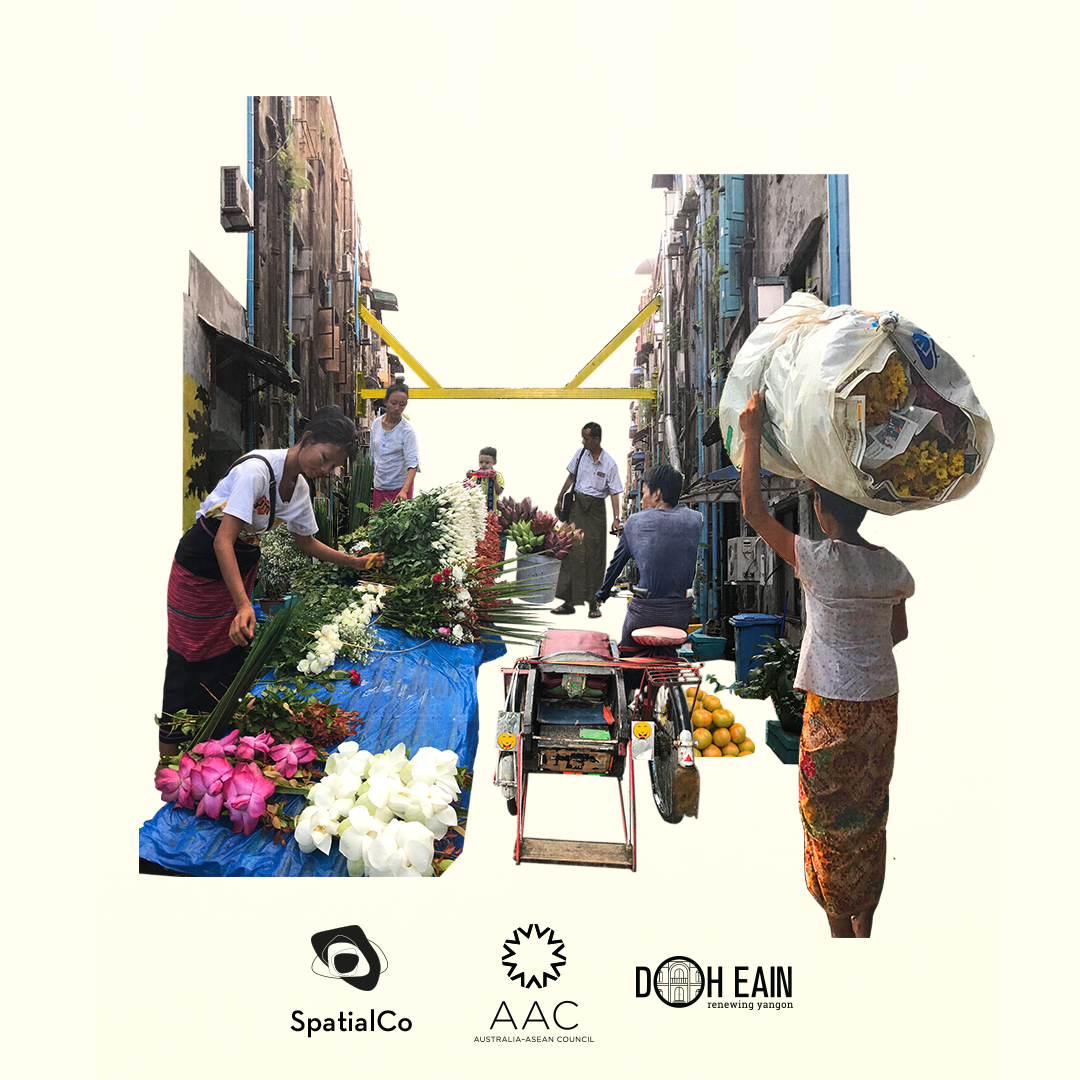
Pansondan Street Film
Medium: Point Cloud Film
Collaboration with SpatialCo
The film explores the various scales of interactions happening along Yangon’s Pansodan Street.
Screened November 2019 at Perth Urban Screening, Perth, Western Australia, Australia
Screened March 2020 at Urban Screening, Melbourne Design Week 2020, Melbourne, Victoria, Australia
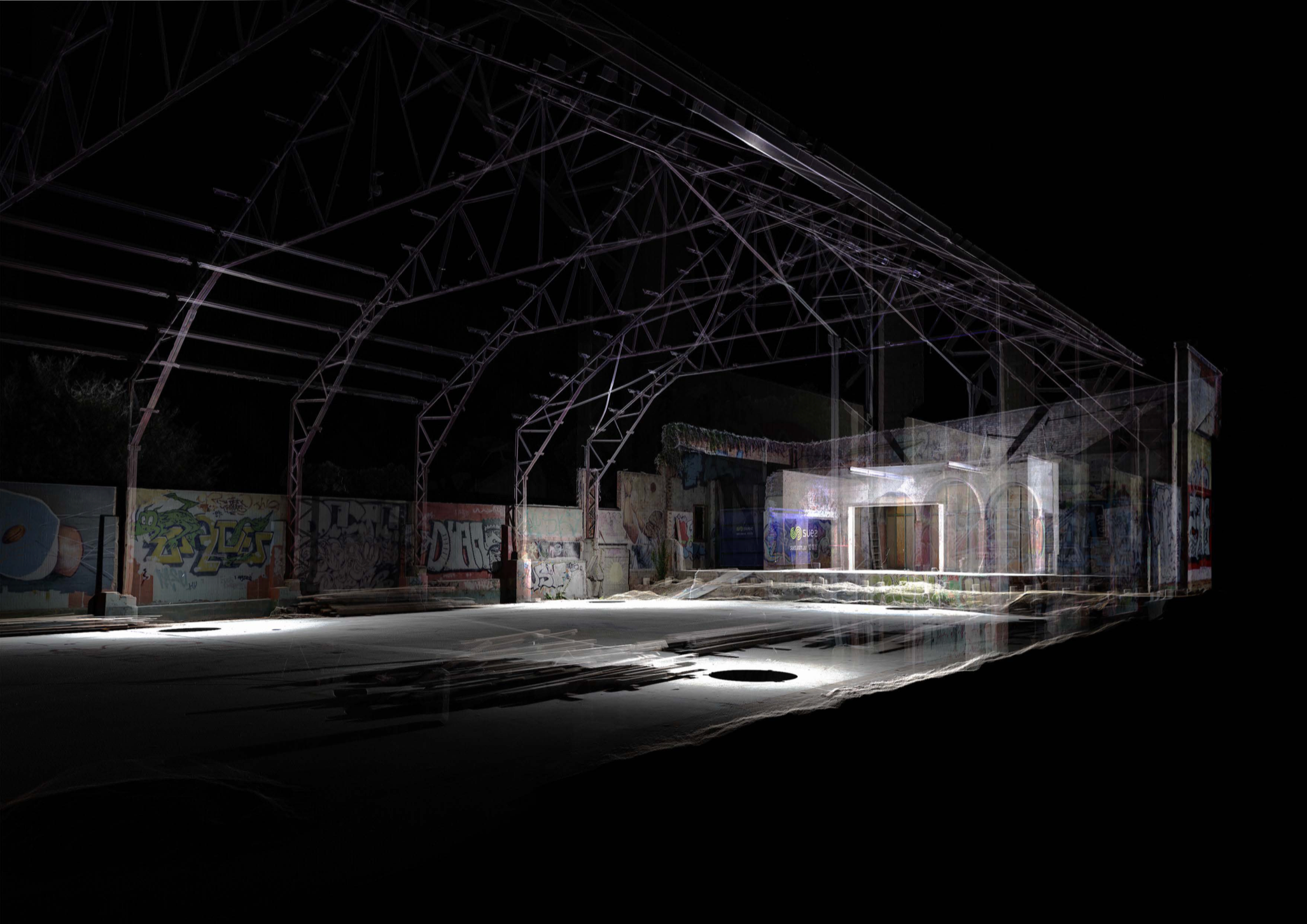
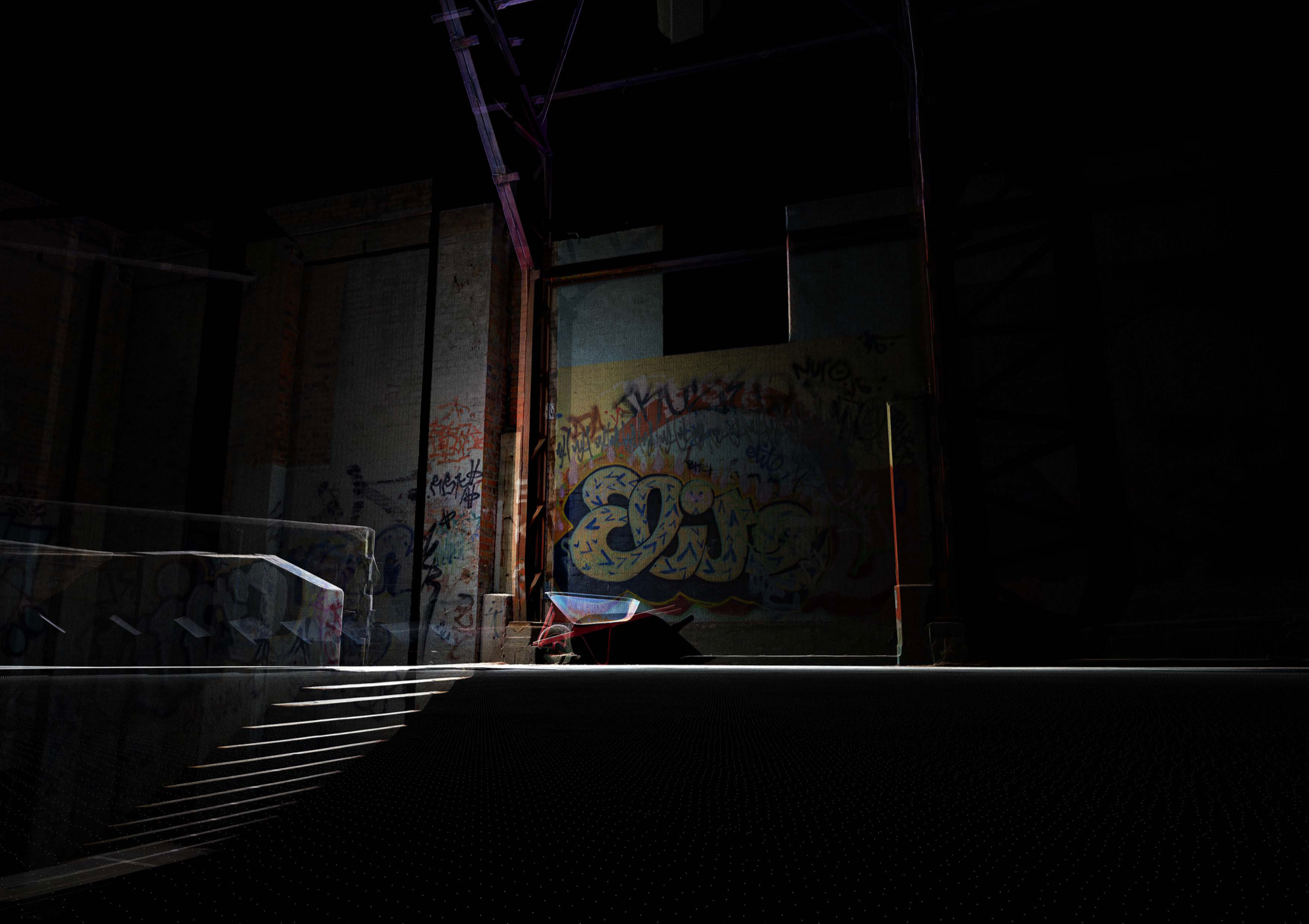

x, y, z
Medium: Point Cloud Images
Collaboration with SpatialCo, Julia Zin and Arjan Sandhu
The project included 3D laser scanning of Red Hill Skate Arena - a locally heritage listed building in Brisbane, Queensland, Australia - to capture measurable spatial data through the creation of a three-dimensional point cloud. The 1920s building has formerly been a cinema, a sound lounge and a skate arena. Following a devastating fire in 2003, the building’s ruinous state provided an ideal space for many well-known Brisbane street artists.
The spatial investigations, using 3D laser scanning technology, document the concrete structural elements as well as the seemingly banal dust, peeling paint and discarded objects within the interior space of the building. The images created demonstrate the capacity of the technology to move beyond the measurable to reveal intangible aspects embedded within the fabric of this iconic heritage building.
Exhibited 14 to 25 January 2019 at Onespace Gallery, Brisbane, Queensland, Australia →
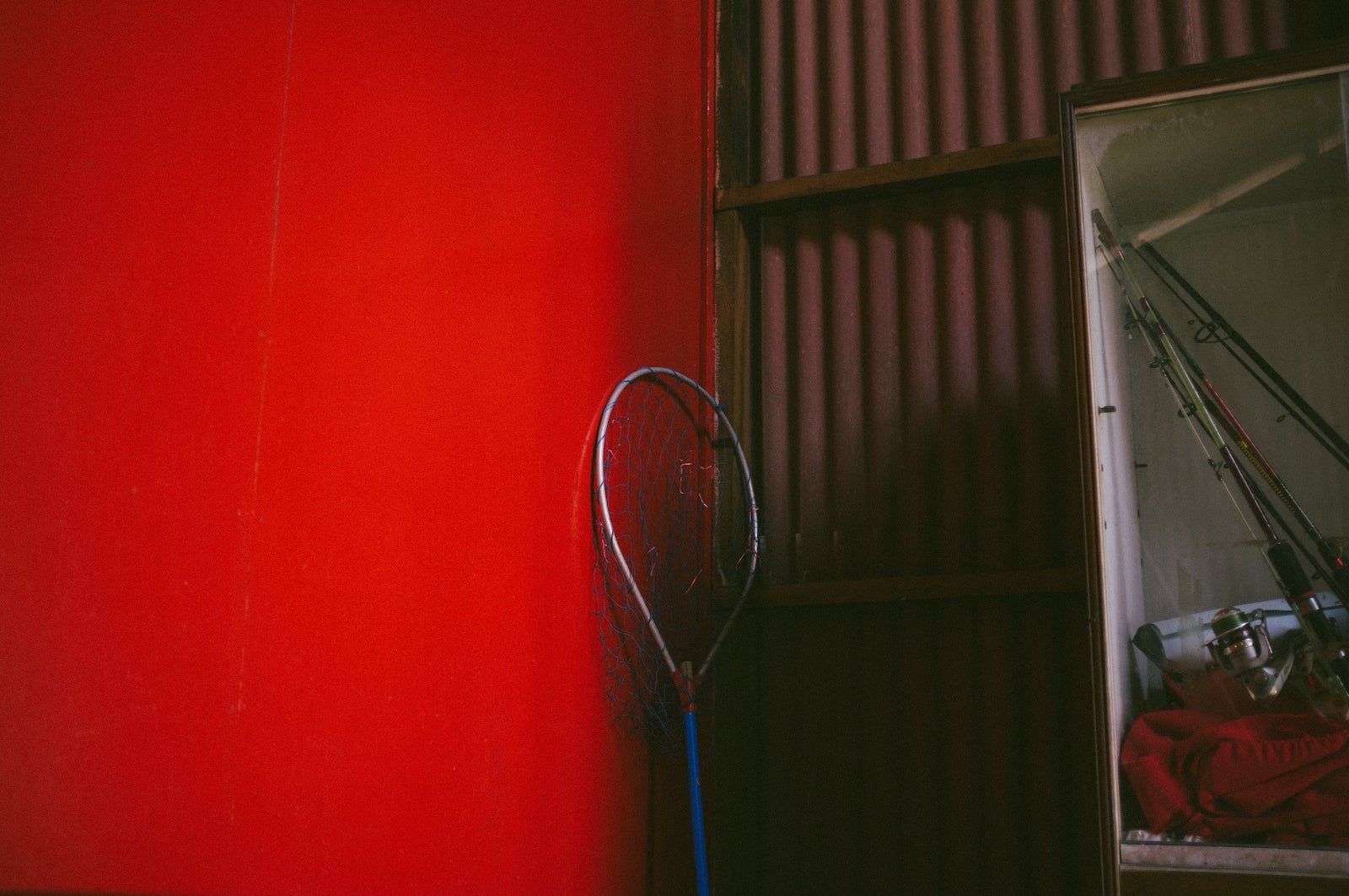 This project was undertaken as part of an elective subject in the final year of the Bachelor of Architectural Design degree at The University of Queensland (UQ). The course was condensed into a two week trip across Singapore and Malaysia with the main research component taking place in the UNESCO listed city of George Town, Penang, Malaysia. The course focussed around the idea of place making exploring the tangible, intangible and sub-tangible influences on a place.
This project was undertaken as part of an elective subject in the final year of the Bachelor of Architectural Design degree at The University of Queensland (UQ). The course was condensed into a two week trip across Singapore and Malaysia with the main research component taking place in the UNESCO listed city of George Town, Penang, Malaysia. The course focussed around the idea of place making exploring the tangible, intangible and sub-tangible influences on a place.
Travelling through Singapore and Malaysia I was interested in people’s connection to objects. The apparent juxtaposition between the sentimentality as a foreigner and the banality as a native. In Penang we visited Mr Tan Yeow Wooi, a conservation architect. Mr Tan showed a movie he had made about a family having to move from their house due to the removal of rent control after the heritage listing of George Town by UNESCO making rent prices skyrocket to approximately 500% the original rental prices. In the film the family is clearly distressed, unsure about their future and a sadness to leave their family home. The film exemplified our connection to the objects and spaces we inhabit and the memories they can evoke.
Travelling through Singapore and Malaysia I was interested in people’s connection to objects. The apparent juxtaposition between the sentimentality as a foreigner and the banality as a native. In Penang we visited Mr Tan Yeow Wooi, a conservation architect. Mr Tan showed a movie he had made about a family having to move from their house due to the removal of rent control after the heritage listing of George Town by UNESCO making rent prices skyrocket to approximately 500% the original rental prices. In the film the family is clearly distressed, unsure about their future and a sadness to leave their family home. The film exemplified our connection to the objects and spaces we inhabit and the memories they can evoke.
This interest formed conversations, documenting each individual and their object that sparked the conversation and their association with it. This formed a framework that drove the project resulting in the observational research project, Small Interactions.
As a visitor we seek something different. We see something foreign and we associate meaning - a meaning vastly different from that we would assume at home. We associate our own message to the objects we buy, the people we see and places we visit. We infer from our own thoughts and ideas about a place and culture to create an impression of a place. However, without listening we ignore the people and their stories. The story of the fisherman who did not catch anything on the Jetty that day. The story of the Joss Stick maker’s son who feels a responsibility to care for his ageing father. The story of the lady taking shelter in the shade who makes a joke to her friend after I take her photo. These small interactions weren’t planned or forced - they just happened.
The interaction of people’s stories, culture and ideologies are key for a place to thrive.
This project explores my interactions through the stories people have using their objects as a basis for conversation. It acknowledges the constraint of time and place.

